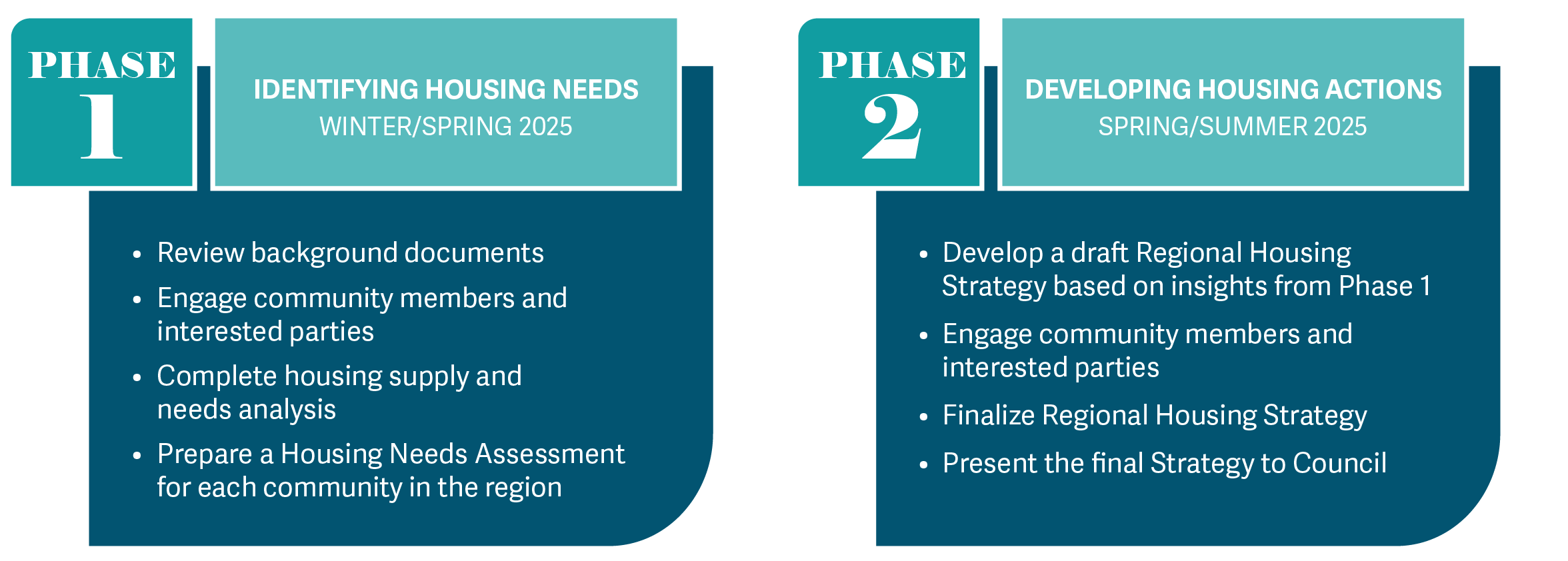Regional Housing Strategy

The County of St. Paul, the Town of St. Paul, the Town of Elk Point, and the Summer Village of Horseshoe Bay have experienced varying rates of growth in the last decade.
The table below presents the population of each municipality in 2016 and 2021 (from the Statistics Canada censuses on these years) and the estimated population in 2023 (from the Alberta Regional Dashboard). It also offers the average annual growth rates observed throughout the 2016 -2021 census period, and the 2-year period from 2021 to 2023, which is the last population data point available.
| Municipality | 2016 Population (StatCan) | 2021 Population (StatCan) | 2016-2021 Average Annual Growth Rate | Estimated 2023 Population (Alberta Regional Dashboard) | 2021-2023 Average Annual Growth Rate |
|---|---|---|---|---|---|
| County of St. Paul | 6,036 | 6,306 | 0.88% | 6,446 | 1.10% |
| Town of St. Paul | 5,827 | 5,863 | 0.12% | 5,925 | 0.53% |
| Town of Elk Point | 1,452 | 1,399 | -0.74% | 1,443 | 1.56% |
| Summer Village of Horseshoe Bay | 49 | 81 | 10.58% | 81 | 0% |
While some municipalities in the region have experienced slower growth than others, the housing reality appears to be similar across the board. There is an increasing need for diverse housing types, both rentals and ownership, at different affordability levels to better meet the evolving needs of current and future residents. Providing a mix of housing types and tenures of varying levels of affordability is essential for creating diverse, inclusive, and healthy communities in the St. Paul region.
The County of St. Paul, the Town of St. Paul, the Town of Elk Point, and the Summer Village of Horseshoe Bay have engaged ISL Engineering and Land Services Ltd. (ISL) to better understand the current housing situation in each community and the region as a whole, and develop an action plan accordingly.
This project is funded by the Alberta Community Partnership grant through the Government of Alberta. The grant helps municipalities by providing support for regional collaboration and capacity building initiatives.
What is a Housing Strategy?
There are two parts to the Housing Strategy. The first part is completing a Housing Needs Assessment (HNA) to better understand the current housing situation in the region. The HNA will include information such as:
Community Demographics
Current housing supply and demand, including a range of housing options
Condition of existing housing
Rental vacancy rates
Affordability
Gaps in the housing market and opportunities to fill those needs
Future housing needs
Current and future housing needs, gaps, and future priorities will be explored across the full housing continuum, which represents a range of housing options that can be available in a community. A depiction of this continuum is shown below.

The second part is the Regional Housing Strategy itself, which provides a roadmap to help the region and municipal partners create and maintain an affordable, safe, and suitable supply of housing. The Strategy will:
Determine the affordable housing gap, identify current barriers for residents to access and keep a home that meets their needs, define the key housing issues, and prioritize actions to best address these issues
Present a series of recommendations in alignment with the data compiled through the HNA
Include policies, strategies, and approaches to address community-specific housing issues
Explore opportunities for partnerships and confirm specific roles of key organizations and agencies providing services in the region
Recommend an implementation plan with short- and long-term goals and performance indicators to measure success.
Both parts of the project involve engagement with the local community and interested and affected organizations.
Project Timeline

We Want to Hear From You
We are currently wrapping up Phase 1: Identifying Housing Needs and entering Phase 2: Developing Housing Actions.
In Phase 1, we learned about your experiences with housing in the region and the challenges and opportunities you have related to housing in the St. Paul region. The questions and conversations we had helped us understand:
- Current housing gaps and issues/barriers
- Existing and future needs
- Areas of priority
- Housing goals and ideas to achieve the goals
To see the feedback received during the first phase of engagement, view the What We Heard Report!
Your feedback helped us identify key housing issues, priorities, and potential actions, which are the main elements that comprise the draft Regional Housing Strategy. As we move into the second phase of the project, we are sharing the draft Regional Housing Strategy and are seeking feedback from the community on the proposed strategies and actions that will direct future housing decisions in the region.
To review the reports for Phase 1: Identifying Housing Needs, click on the links below!
Let’s Talk Housing!
Provide your feedback on the draft housing policies and actions identified for the St. Paul region by participating in the engagement opportunities available between
July 30 – August 27, 2025.
Starting July 30, click HERE to complete the survey or contact ISL at info@islengineering.com or (403) 254-0544 to request a printed copy.
Attend one of the upcoming Community Pop-ups (in-person) to learn more about the project and share your thoughts on the proposed policies and actions. The same information will be shared at both events.

Click on the links below to view what will be shared at the Community Pop-ups!
Community Popups
Town of St. Paul
Date: August 20, 2025
Time: 2:00-4:00PM
Location: Midweek Farmers’ Market @ St. Paul Seniors Centre (4809-47 Street)
Town of Elk Point
Date: August 21, 2025
Time: 3:00-5:00PM
Location: Elk Point Farmers’ Market @ Allied Arts & Leisure Centre (4605 – 57 Avenue, Elk Point, Alberta)
Questions?
Glossery
A Glossary of Terms has been prepared to describe housing policy terms you may not be familiar with. It can be viewed here.
More Information
For more information about the project, contact:
ISL Engineering and Land Services Ltd.
Phone: (403) 254-0544
Email: info@islengineering.com
